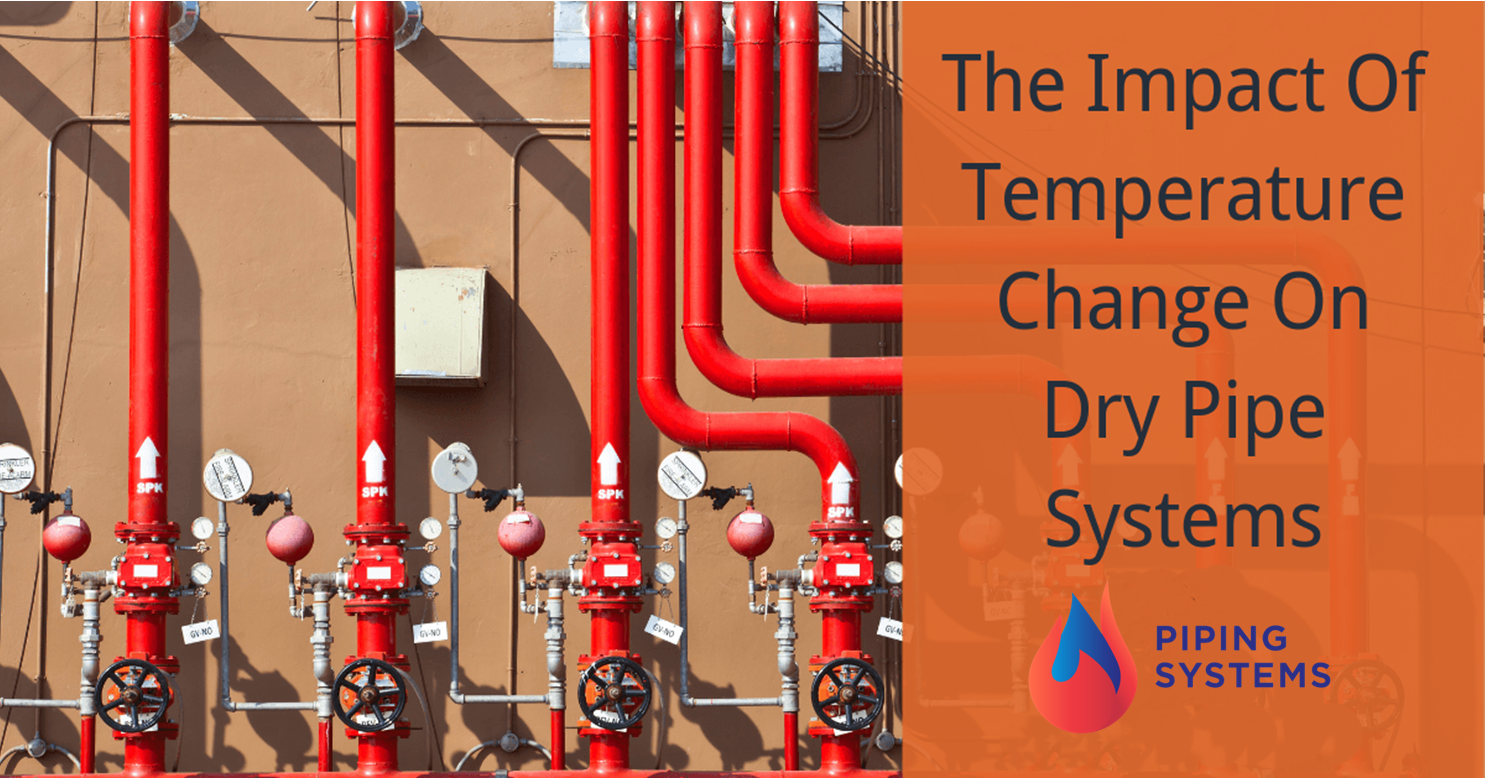Published August 19, 2019

In different types of climates and in various types of buildings, facilities, and venues, the standard type of sprinkler systems are simply not a possibility. The standard type of wet system has water present in the pipes of the system on an ongoing basis. While this is fine for areas where there is a consistent temperature, such as an office building or a home, it becomes problematic in unheated areas or when refrigeration systems are in place.
The Basics of a Dry Pipe Sprinkler System
In these types of applications, a dry pipe sprinkler system is the ideal option. This type of system uses pressurized air in the pipe, or sometimes nitrogen, which provides the necessary pressure in the pipe to keep the check valve closed. This is not a standard check valve, but rather a specialized direct differential dry valve.
This valve, which has a larger valve clapper air on the air side of the system as compared to the water side of the system, is only triggered to open when the air pressure drops due to the opening of a sprinkler somewhere in the system.
The drop in pressure opens the valve and allows the water to flow into the pipe and to the open sprinklers for fire suppression. The valve is typically not equipped with either a latching mechanism or a side chamber, which means that changes to the system are immediately reflected in the opening of the valve. This sometimes leads to incidents where the valve is seen to have tripped in error. In fact, this type of tripping of the valve may be a direct result of changes in temperature across the system.
Air Issues and Temperature
As water moves into the pressurized air system, there is some air that is trapped in various areas of the pipe in air pockets. These air pockets can be somewhat addressed with venting options, but they still occur in different parts of the system based on the temperature of both the ambient environment and the subsequent changes of internal pressure.
For example, in the winter in an unheated building, the system contracts slightly, with the necessary pressure adjustment naturally occurs. During the day, as the system heats up with exposure to the sun, the pressure increases. Over time, with the air pockets in the system, this pressure change increases, which can result in the tripping of the valve between the two parts of the system. Relief valves can be installed to regulate this pressure change with ambient temperature change.
Another issue that can occur is when the water on the wet side of the system heats up and expands. There is limited air in this side of the system, so the expansion pushes against the valve, creating a peak that is higher than the pressure of the air on the dry pipe side, causing the valve to trip and the water to flow into the dry pipe.